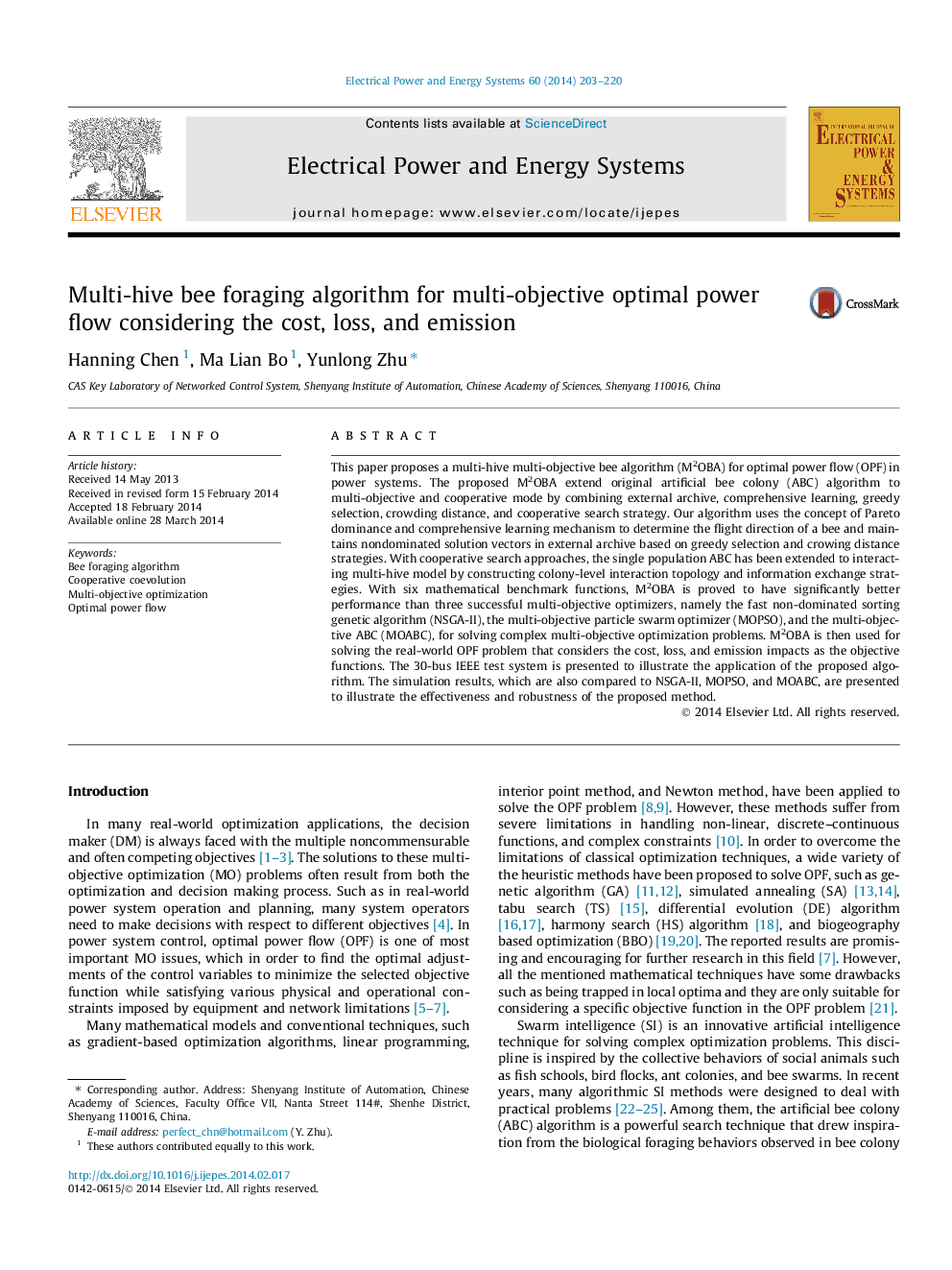| Article ID | Journal | Published Year | Pages | File Type |
|---|---|---|---|---|
| 399718 | International Journal of Electrical Power & Energy Systems | 2014 | 18 Pages |
•A multi-objective OPF model is proposed based on novel M2OBA algorithm.•External archive, crowding distance and comprehensive learning are used in M2OBA.•Multi-hive cooperative coevolution ensures the diversity of the M2OBA.•M2OBA obtains better Pareto solutions than NSGA-II, MOPSO, and MOABC.
This paper proposes a multi-hive multi-objective bee algorithm (M2OBA) for optimal power flow (OPF) in power systems. The proposed M2OBA extend original artificial bee colony (ABC) algorithm to multi-objective and cooperative mode by combining external archive, comprehensive learning, greedy selection, crowding distance, and cooperative search strategy. Our algorithm uses the concept of Pareto dominance and comprehensive learning mechanism to determine the flight direction of a bee and maintains nondominated solution vectors in external archive based on greedy selection and crowing distance strategies. With cooperative search approaches, the single population ABC has been extended to interacting multi-hive model by constructing colony-level interaction topology and information exchange strategies. With six mathematical benchmark functions, M2OBA is proved to have significantly better performance than three successful multi-objective optimizers, namely the fast non-dominated sorting genetic algorithm (NSGA-II), the multi-objective particle swarm optimizer (MOPSO), and the multi-objective ABC (MOABC), for solving complex multi-objective optimization problems. M2OBA is then used for solving the real-world OPF problem that considers the cost, loss, and emission impacts as the objective functions. The 30-bus IEEE test system is presented to illustrate the application of the proposed algorithm. The simulation results, which are also compared to NSGA-II, MOPSO, and MOABC, are presented to illustrate the effectiveness and robustness of the proposed method.
